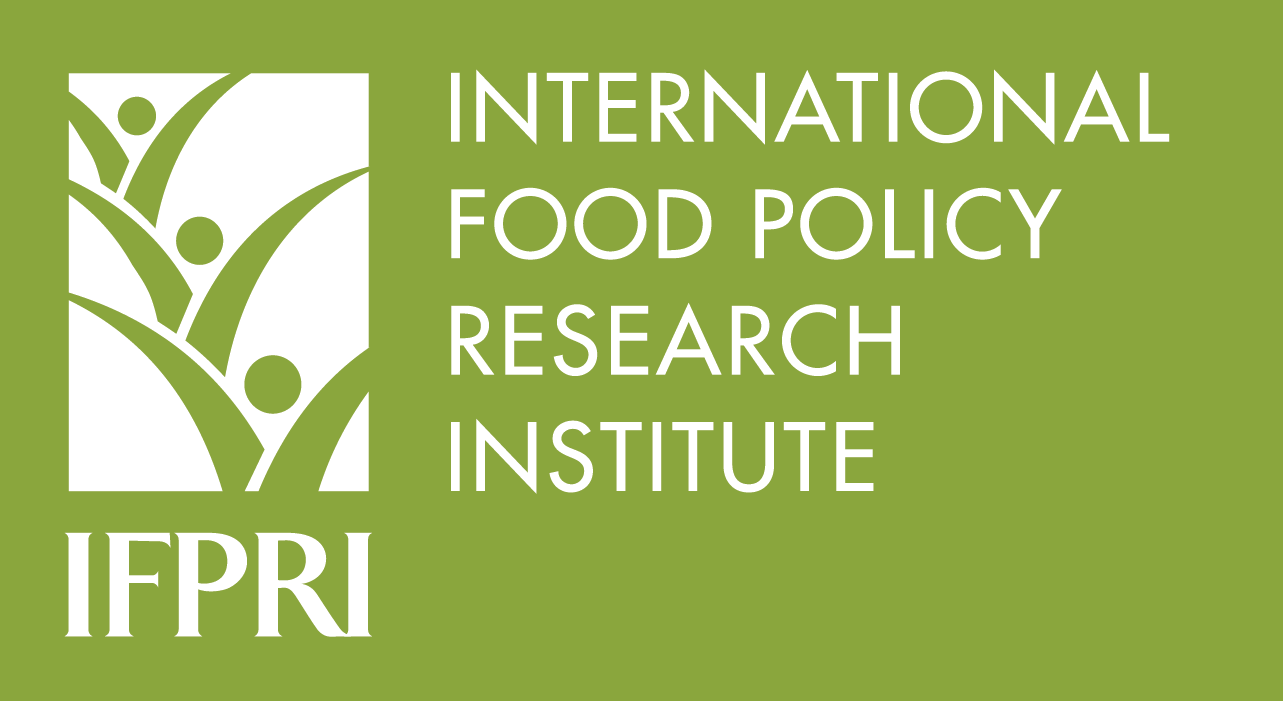Focal point
Location
About IFPRI
The International Food Policy Research Institute (IFPRI) provides research-based policy solutions to sustainably reduce poverty and end hunger and malnutrition in developing countries. Established in 1975, IFPRI currently has more than 500 employees working in over 50 countries. It is a research center of theCGIAR Consortium, a worldwide partnership engaged in agricultural research for development.
Vision and Mission
IFPRI’s vision is a world free of hunger and malnutrition. Its mission is to provide research-based policy solutions that sustainably reduce poverty and end hunger and malnutrition.
What We Do
Research at IFPRI focuses on six strategic areas:
- Ensuring Sustainable Food Production: IFPRI’s research analyzes options for policies, institutions, innovations, and technologies that can advance sustainable food production in a context of resource scarcity, threats to biodiversity, and climate change. READ MORE
- Promoting Healthy Food Systems: IFPRI examines how to improve diet quality and nutrition for the poor, focusing particularly on women and children, and works to create synergies among the three vital components of the food system: agriculture, health, and nutrition. READ MORE
- Improving Markets and Trade: IFPRI’s research focuses on strengthening markets and correcting market failures to enhance the benefits from market participation for small-scale farmers. READ MORE
- Transforming Agriculture: The aim of IFPRI’s research in this area is to improve development strategies to ensure broad-based rural growth and to accelerate the transformation from low-income, rural, agriculture-based economies to high-income, more urbanized, and industrial service-based ones. READ MORE
- Building Resilience: IFPRI’s research explores the causes and impacts of environmental, political, and economic shocks that can affect food security, nutrition, health, and well-being and evaluates interventions designed to enhance resilience at various levels. READ MORE
- Strengthening Institutions and Governance: IFPRI’s research on institutions centers on collective action in management of natural resources and farmer organizations. Its governance-focused research examines the political economy of agricultural policymaking, the degree of state capacity and political will required for achieving economic transformation, and the impacts of different governance arrangements.
Research on gender cuts across all six areas, because understanding the relationships between women and men can illuminate the pathway to sustainable and inclusive economic development.
IFPRI also leads two CGIAR Research Programs (CRPs): Policies, Institutions, and Markets (PIM) andAgriculture for Nutrition and Health (A4NH).
Beyond research, IFPRI’s work includes partnerships, communications, and capacity strengthening. The Institute collaborates with development implementers, public institutions, the private sector, farmers’ organizations, and other partners around the world.
Resources
Displaying 996 - 1000 of 1521Ethiopia: livelihoods, growth, and markets
Recent trends in agricultural growth and food security in Eastern and Central Africa (ECA) have been discouraging. With very low labor productivity, yields, and growth rates, agriculture is unable to keep up with population growth or achieve the type of pro-poor growth needed to reduce poverty dramatically.Yet agriculture accounts for about half of the region’s gross domestic product (GDP) and is the main source of livelihood for the majority of the population. Behind this gloomy picture, however, lies agriculture’s potential to be the engine for growth in ECA.
Women’s collective action and sustainable water management
This paper discusses the case of the Self Employed Women’s Association’s (SEWA) Women, Water and Work Campaign which began in 1995 in the semi-arid regions of Gujarat. SEWA’s women’s groups, which are initiated through collective action, have been active in sustaining local water management through water harvesting, watershed management, handpump repair, pipeline maintenance and revival of traditional sources of water.
Water, women, and local social organization in the Western Kenya highlands
"Safe water is widely recognized as both a fundamental human need and a key input into economic activity. Across the developing world, the typical approach to addressing these needs is to segregate supplies of water for domestic use from water for large-scale agricultural production. In that arrangement, the goal of domestic water supply is to provide small amounts of clean safe water for direct consumption, cleaning, bathing and sanitation, while the goal of agricultural water supply is to provide large amounts of lower quality water for irrigated agriculture.
Development Pathways in Medium- to High-Potential Kenya: A Meso-Level Analysis of Agricultural Patterns and Determinants
The highlands of East Africa have been endowed with a combination of moderate temperatures, adequate rainfall (falling in two distinct seasons for much of the highlands), and productive soils that make the region one of the best suited for agricultural development in all of Africa. As a consequence, the area has a long history of human habitation and supports some of the highest rural population densities in Africa (Hoekstra and Corbett 1995; Pender, Place, and Ehui 1999).
Community Natural Resource Management in the Highlands of Ethiopia
Common property resources1 are important sources of timber, fuelwood, and grazing land in developing countries. When community members have unrestricted access to the resource, or when use regulations are ineffective, these resources are exploited on a first-come, first-served basis. Each individual user of the resource will tend to continue to use the resource until her average revenue is equal to the marginal cost of using the resource (Gordon 1954).



